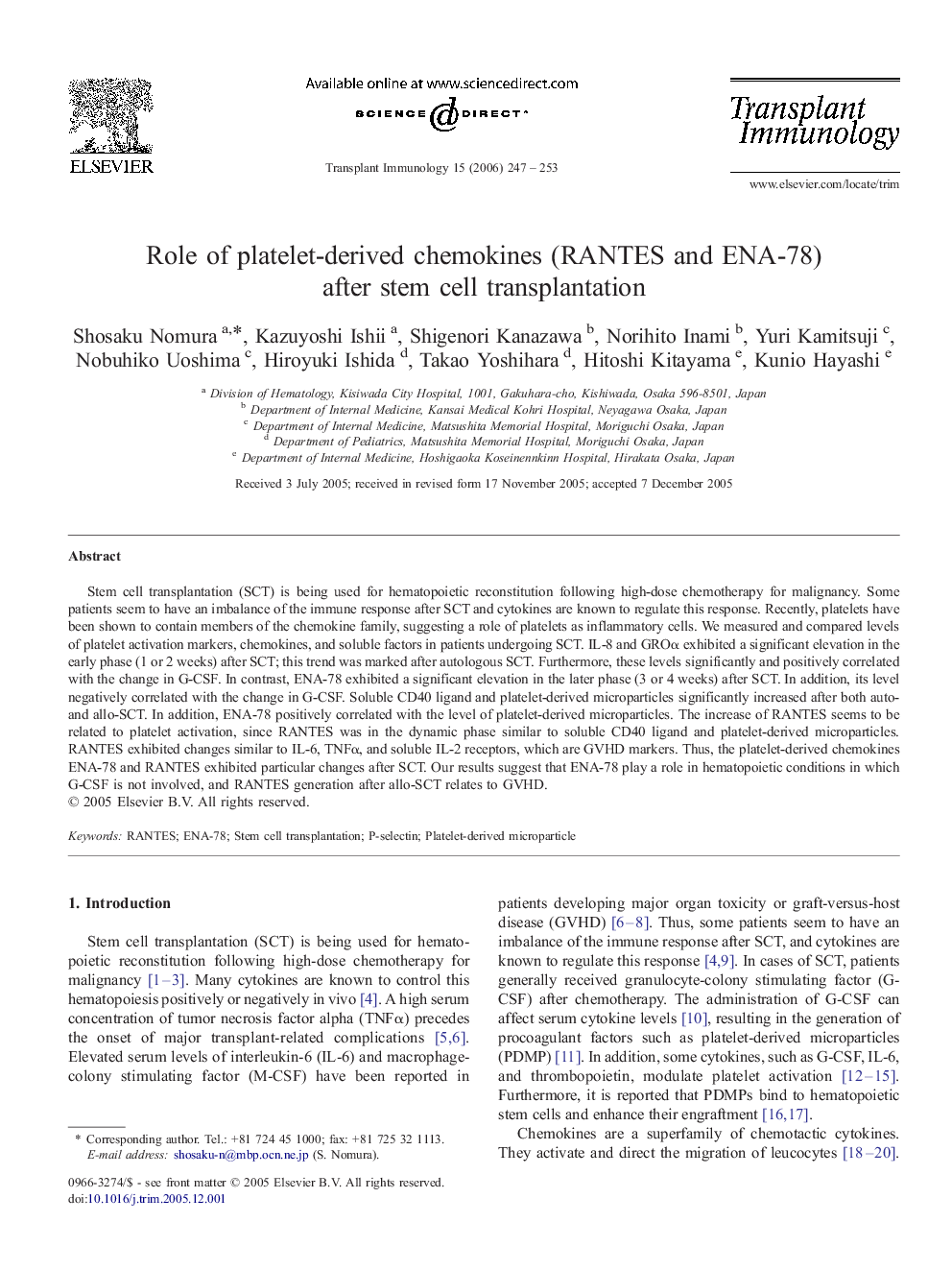| Article ID | Journal | Published Year | Pages | File Type |
|---|---|---|---|---|
| 3392712 | Transplant Immunology | 2006 | 7 Pages |
Stem cell transplantation (SCT) is being used for hematopoietic reconstitution following high-dose chemotherapy for malignancy. Some patients seem to have an imbalance of the immune response after SCT and cytokines are known to regulate this response. Recently, platelets have been shown to contain members of the chemokine family, suggesting a role of platelets as inflammatory cells. We measured and compared levels of platelet activation markers, chemokines, and soluble factors in patients undergoing SCT. IL-8 and GROα exhibited a significant elevation in the early phase (1 or 2 weeks) after SCT; this trend was marked after autologous SCT. Furthermore, these levels significantly and positively correlated with the change in G-CSF. In contrast, ENA-78 exhibited a significant elevation in the later phase (3 or 4 weeks) after SCT. In addition, its level negatively correlated with the change in G-CSF. Soluble CD40 ligand and platelet-derived microparticles significantly increased after both auto- and allo-SCT. In addition, ENA-78 positively correlated with the level of platelet-derived microparticles. The increase of RANTES seems to be related to platelet activation, since RANTES was in the dynamic phase similar to soluble CD40 ligand and platelet-derived microparticles. RANTES exhibited changes similar to IL-6, TNFα, and soluble IL-2 receptors, which are GVHD markers. Thus, the platelet-derived chemokines ENA-78 and RANTES exhibited particular changes after SCT. Our results suggest that ENA-78 play a role in hematopoietic conditions in which G-CSF is not involved, and RANTES generation after allo-SCT relates to GVHD.
